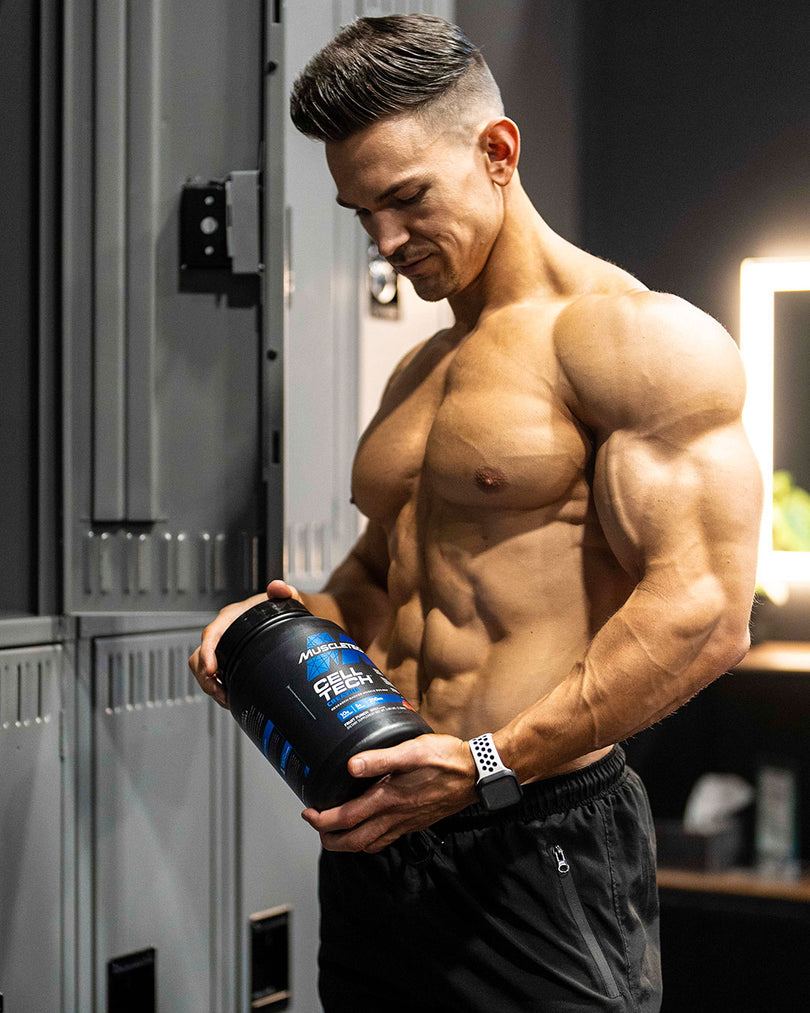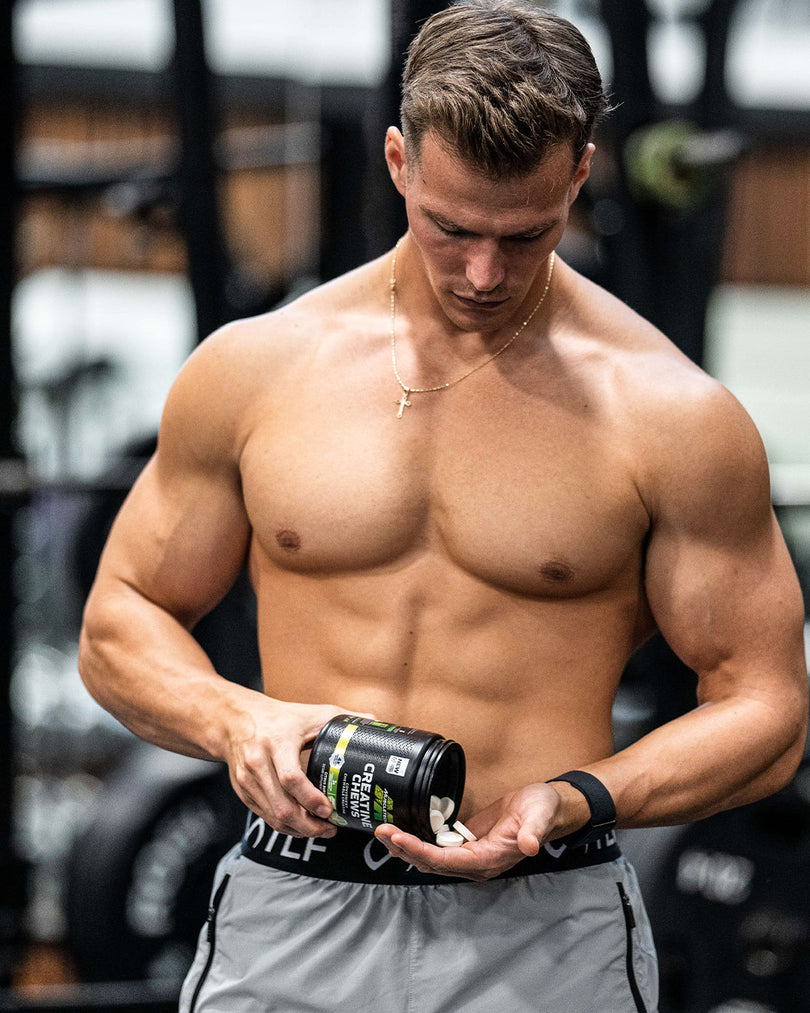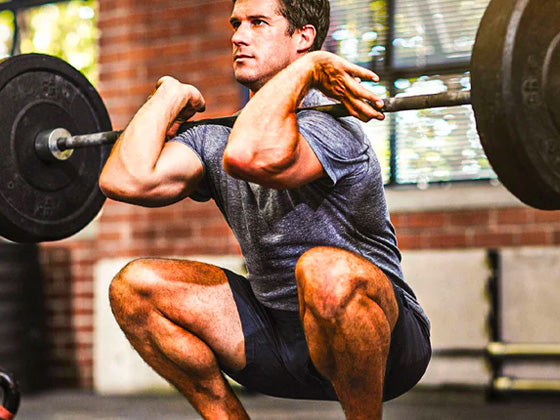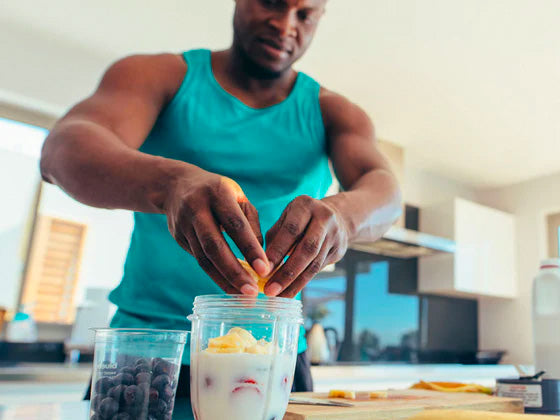Typically, 0.5- to 2-pounds a week is considered the safe recommendation for weight loss. For this mini cut—an accelerated fat-loss program—we’ll be aiming for the upper-end of that range at 1.25-2 pounds a week.
Since we know that a pound of fat is approximately 3500 calories, the general rule of thumb is to reduce 500 calories a day to lose about a pound a week. If you’re aiming for 2 pounds a week, your calorie deficit becomes 1000. It’s important you only reduce what you can safely with energy to spare to fuel your workouts. You must be eating enough to begin with in order to cut a significant amount like 1000 calories. For example, a woman eating 2000 calories a day should not cut 1000. It’s simply not sustainable or safe.
Here are five tactics, plus a sample meal plan that can help you shave off 10 to 16 pounds of fat in just 8 weeks.
Also Read: Get Protein on a Budget
MASTER YOUR MACROS
Macronutrients (macros) are the nutrients your body requires in large amounts: your protein, carbohydrates and fats. Of course, micronutrients play a role too, those are your vitamins and trace minerals—think of them as supporting actors in your total nutrition profile. But when it comes to leaning out, finding the right macro mix is what will move the fat-loss needle.
Depending on your goal, timeline, and where you stand now, your macro breakdown will look quite different than someone else. Macro mixes vary greatly depending on body type and BMR but most experts agree they should fall in the range of 45–65% carbs, 20–35% fats and 10–35% protein (AMDR).
There are a ton of ways to go about figuring out your macro range and we could give you a complicated formula to follow here but it’s 2022, and there are plenty of math-free tools available at your fingertips.
Apps like My Fitness Pal, Carb Manager and My Macros+ are all easy-to-use, intuitive tools for determining your macros and tracking them while you get the hang of it, to keep you on target and seeing results from week one.
There are also countless free versions online for simply determining your macro ranges, if you prefer to go that route. These will allow you to get really specific about your goal weight and deadline, which will determine your exact macro mix and calorie range.
EMBRACE INTERMITTENT FASTING—AND TRAIN IN THAT STATE
Intermittent fasting (IF), exactly what it sounds like, is splitting your 24-hour day into feeding and fasting windows. Most experts start with a 12 hours on 12 hours off (eating) schedule and gradually work towards a 16:8 or an 18:6 fast-to-eat ratio.
After several hours without eating, something happens called metabolic switching, where the body depletes its sugar stores and starts to burn fat for energy.
IF is well known for its ability to accelerate weight loss but also offers several other health benefits like preventing, treating and reversing insulin resistance, an underlying condition of a slew of diseases. And it also reduces inflammation in the body, which also helps to lower risk for many diseases.
Training in a fasted state is another tactic you can try. A Northumbria study published in theThe British Journal of Nutrition found that subjects that trained in a fasted state burned up to 20 percent more fat and that morning was the best time to do it.
If leaning out for summer is goal number one for you, this strategy is worth a try, but if you’re trying to build muscle simultaneously, depleted amino acids in the morning after fasting could be a drawback for adding muscle and should be counteracted with a quick hit of protein after your morning session. Something easily digestible like a protein shake is best.

GET INTO HIIT TRAINING
What if we told you that you could workout for a third of the time as steady-state cardio (running, cycling) yet burn 25 to 30% more calories? That’s the magic of high intensity interval training (HIIT).
The general concept of HIIT training can be defined as intense, all-out bouts of training broken up with short recovery breaks for a total of 30-60 minutes, but some HIIT workouts can be even less, capped at as little as 15 or 20 minutes.
The reason that HIIT training is so effective for weight loss is because of what happens after your session. HIIT training has been proven to supercharge metabolic rate and even switch from burning glucose (carbs) for energy to fat throughout the day after your training session.
CUT ALL FORMS OF SUGAR (INCLUDING ALCOHOL)
This one may sound obvious—and is no doubt one of the hardest ones to stick to—but you’d be surprised at just how effective it is when it comes to leaning out fast.
Cutting sugar out during your mini-cut will make all the difference. We don’t mean just turning down the occasional bowl of ice cream or candy bar either. Sugar in all its forms: Simple, refined carbs (white bread, pasta, rice, flour, cereals), alcoholic beverages, juices and soda, added sweeteners, even artificial and “all-natural” ones, like cane sugar and maple syrup count too.
Why is slashing sugar so effective for leaning out? First it’s important to know how insulin works. When simple, high-glycemic carbs or sugars are consumed, this causes a spike in blood sugar, which in turn releases insulin. Insulin’s job (in a nutshell) is to help disperse sugar, or glucose, for energy and then store the rest for later use.
The problem is that most of us already get more glucose than we need, which means a lot of it winds up getting stored in the liver. But the liver can only hold a certain amount of glycogen at a time, which means anything above and beyond that gets stored in muscle tissue and as lipid in fat cells—as adipose tissue—for even longer-term storage—which results in weight gain.
The upshot: Cutting way back or totally eliminating sugar in the form of simple carbs, added sweeteners and alcohol will go a long way in helping you to lean out fast.
Instead, get plenty of low-starch, nutrient-dense vegetables at every meal (think leafy greens, asparagus, peppers, cruciferous veg like broccoli and cauliflower) along with meeting your protein target and you’re sure to keep your metabolism humming along while staying pleasantly satiated.
CONSIDER CARB CYCLING
Carb cycling is a popular diet protocol, especially among athletes, where you alternate between high- and low-carb days or “streaks” (e.g., two high-carb days then three low-carb days, repeat), generally planned around intense training days and lower-impact or rest days.
By fluctuating the amount of carbs you eat, on low-carb days, you’re forcing your body to burn fat instead of glucose. The key here is that you’re still training regularly while carb cycling, as high-carb days could result in gaining weight if you’re not active.
WebMD recommends the following carb amounts for high- and low-intensity training days. Simply plug and play into your training regimen.
- High-intensity workout: 175-275 grams of carbs
- Light-intensity workout: 100-125 grams of carbs

LEAN-OUT MEAL PLANS FOR MEN AND WOMEN
These plans were created based on 2500 calories a day for men and 1800 calories a day for women. To get ultra-specific about your daily caloric needs, use an online calorie counter or macro app with a calorie counter.
SAMPLE MEAL PLAN FOR MEN (2500 calories)
Breakfast: 3 Protein Pancakes: with 2 medium eggs, 1 cup whole-wheat flour, 70 g of chocolate protein powder, 1.5 cups unsweetened almond milk, 1 tsp cacao powder, 3 tsp baking powder, zest of one orange (700 cals)
Mid-morning meal: High-Protein Parfait: 1 cup of plain Greek yogurt, 20g of Muscletech Grass-Fed 100% Whey Protein deluxe vanilla, ¼ cup raspberry, ⅛ cup pecans, ⅛ cup coconut flakes, pinch cinnamon (250 cals)
Lunch: Salmon with Couscous: 5 ounces cooked salmon filet, 1/2 cup of cooked couscous mixed with olive oil, cherry tomatoes, parsley, squeeze of lemon juice and ¼ cup crumbled feta (700 cals)
Mid-afternoon meal: Espresso Protein Shake: 30 g of Nitro-Tech Ripped Protein French Vanilla Bean, ½ tbsp of instant coffee, ¾ cup unsweetened coconut milk, 1 cup ice, 120 ml water (250 cals)
Dinner: Pesto Chicken Bowl: 7 ounces of cooked chicken breast, cubed, ⅓ cup packaged pesto, 1.5 cups sweet potato cooked and cubed, ⅔ cup cooked broccoli, 2 tsp evoo. (700 cals)
SAMPLE MEAL PLAN FOR WOMEN (1800 calories)
Breakfast: 2 Protein Pancakes with 1 medium egg, ½ cup whole-wheat flour, 50 g of chocolate protein powder, 1 cup unsweetened almond milk, 0.5 tsp cacao powder, 1.5 tsp baking powder, zest of half an orange (450 cals)
Mid-morning meal: High-Protein Parfait: 1/2 cup of plain Greek yogurt, 20g of Muscletech Grass-Fed 100% Whey Protein deluxe vanilla, ¼ cup raspberry, ⅛ cup pecans, ⅛ cup coconut flakes, pinch cinnamon (250 cals)
Lunch: Salmon with Couscous: 3.5 ounces cooked salmon filet, ½ cup of cooked couscous mixed with olive oil, cherry tomatoes, parsley, squeeze of lemon juice and ⅛ cup crumbled feta (450 cals)
Mid-afternoon meal: Espresso Protein Shake: 30 g of Nitro-Tech Ripped Protein French Vanilla Bean, ½ tbsp of instant coffee, ¾ cup unsweetened coconut milk, 1 cup ice, 120 ml water (250 cals)
Dinner: Pesto Chicken Bowl: 4.5 ounces of cooked chicken breast, chopped, ¼ cup packaged pesto, 1 cup sweet potato cooked and cubed, ½ cup cooked broccoli, 2 tso evoo (450 cals)
3 DAYS ON/ 3 DAYS OFF WORKOUT SPLIT
| MON | TUE | WED | THUR | FRI | SAT | SUN |
| HIIT CARDIO | FULL-BODY RESISTANCE | HIIT CARDIO | OFF | HIIT CARDIO/ RESISTANCE HYBRID | HIIT HYBRID | FULL BODY RESISTANCE |
SAMPLE EXERCISES
HIIT CARDIO
- Speed squats
- Alternating kettlebell swings
- 10x Ice skaters + 2 star jumps
- Balance trainer burpees
FULL BODY RESISTANCE
- Dumbbell alternate forward lunge
- Dumbbell flat bench press
- Kettlebell deadlift
- Kettlebell bent-over rows
HYBRID
- Resistance: Dumbbell Romanian deadlift staggered
- Cardio: Hands off burpees
- Resistance: Dumbbell double bicep curl twist to squat
Cardio: Plyo lunges (1 each side) to jump squats (2)
Visit our Shop to Buy the Best Body Building Supplements
Read Our Top Read Content:
-
A-Z Guide to Bodybuilding for Beginners
-
The Best Bulking Diet for Skinny Guys
-
Creatine - Unleashing Power, Performance, and Safety








